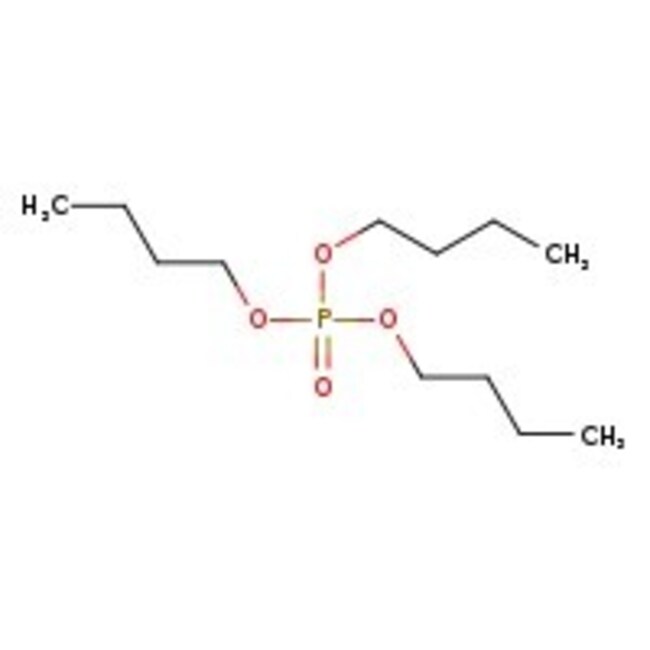Search Thermo Fisher Scientific
Tri-n-butyl phosphate, 98%, Thermo Scientific Chemicals



Tri-n-butyl phosphate, 98%, Thermo Scientific Chemicals
Chemical Identifiers
Specifications
Description
This Thermo Scientific Chemicals brand product was originally part of the Alfa Aesar product portfolio. Some documentation and label information may refer to the legacy brand. The original Alfa Aesar product / item code or SKU reference has not changed as a part of the brand transition to Thermo Scientific Chemicals.
Tri-n-butyl phosphate is used as a solvent for rare earth metals exaction and purification, and as a flame retardant component of aircraft hydraulic fluid. It is involved in the formation of stable hydrophobic complexes with some metals. It is also employed as a defoamer additive in cement casings for oil wells, as an anti-air entrainment additive for coatings and floor finishes and as a solvent in nuclear fuel processing. Further, it is used as a solvent in inks, synthetic resins, gums and adhesives. In addition, it is used as a plasticizer for cellulose esters like nitrocellulose and cellulose acetate.
Solubility
Miscible with diethyl ether, benzene, carbon disulfide and ethanol. Slightly miscible with water.
Notes
Incompatible with strong oxidizing agents, strong bases and alkali.
Figures
Documents & Downloads
Certificates
Frequently asked questions (FAQs)
Citations & References
Safety and Handling
Classification of the substance or mixture
CLP classification - Regulation(EC) No 1272/2008
Label Elements
Signal Word
Warning
Hazard Statements
H302 - Harmful if swallowed
H315 - Causes skin irritation
H351 - Suspected of causing cancer
H412 - Harmful to aquatic life with long lasting effects
Precautionary Statements
P201 - Obtain special instructions before use
P280 - Wear protective gloves/protective clothing/eye protection/face protection
P301 + P330 + P331 - IF SWALLOWED: rinse mouth. Do NOT induce vomiting
P302 + P352 - IF ON SKIN: Wash with plenty of soap and water
P312 - Call a POISON CENTER or doctor if you feel unwell